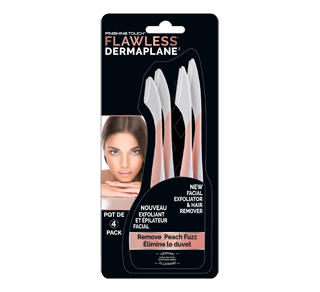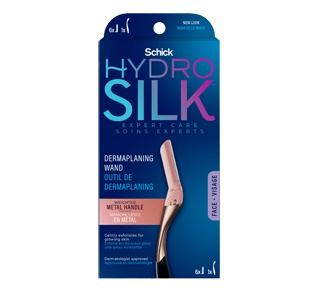There are literally hundreds of skincare techniques, some of them quite surprising. One that’s trending on social networks these days is called dermaplaning—also known as peach fuzz removal—or more simply, facial shaving. When it comes to women, we don’t generally think of shaving the face, but let’s take a closer look…
What exactly is dermaplaning?
Dermaplaning is a beauty treatment created to remove hair. But it goes a step further, removing dead skin that can clog pore. As a result, you get softer, smoother, more radiant skin.
Another key benefit of dermaplaning is that by removing excess skin and peach fuzz, your facial-care products are more easily absorbed, so they’re more effective, and makeup is easier to apply.
Fans of dermaplaning say they get a beautiful, more even skin tone. Best of all, this treatment can be done in your own home!

A simple guide to dermaplaning…
Forget the razor you use on your legs. To dermaplane successfully, you need a small, angled, single-blade razor, like a tinkle razor, which is far more delicate and easier to handle. Once you’ve got yours, just follow these few steps.
- Wash your face to remove makeup or other impurities (dermaplaning can only be done on clean skin).
- Apply a lubricant like a shaving gel, facial oil or serum to avoid irritation.
- Gently glide the new razor along your skin at a 45º angle, using small, steady strokes.
- Moisturize your skin afterwards, using your favourite cream or serum.
Dermaplaning can be done once or twice a month. But, to avoid getting inflamed skin, it’s important that you do it carefully, and avoid using other types of exfoliants for a few days afterwards.
Facial hair
Contrary to popular beliefs about shaving your face, dermaplaning won’t affect the colour of your facial hair or cause it to grow back more heavily. Note: the hairs may appear thicker as the tips get squared off, but they’re not actually any thicker or darker.
The right products
For proper dermaplaning, use a razor created specifically for this purpose. However, some fans of hair-removal techniques prefer to use waxes or depilatory creams. What’s important, is that you find the technique that’s right for your skin type and when in doubt, discuss it with a specialist.



